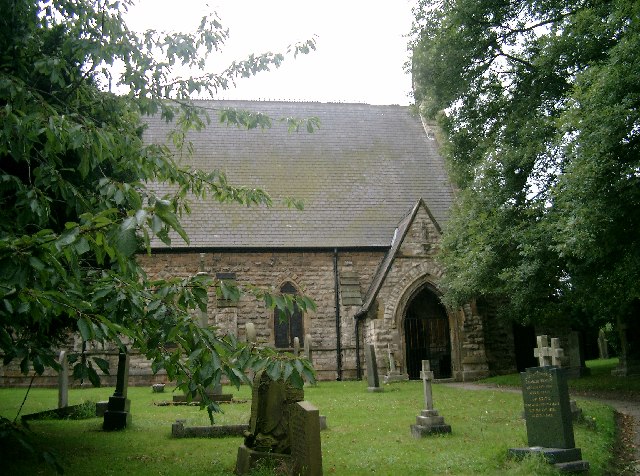|
Micklefield Railway Station
Micklefield railway station serves the village of Micklefield, near Garforth in West Yorkshire, England. It lies on the Selby and York Lines, operated by Northern, east of Leeds. Just east of the station, the York and Selby Lines split in their respective directions. History The station was originally opened by the Leeds and Selby Railway in 1834, though buildings were not erected (on the north side) until the following year. The line towards Church Fenton Church Fenton or Kirk Fenton is a village and civil parish in the Selby District of North Yorkshire, England. It is about east of Leeds, about south-east from Tadcaster and north from Sherburn in Elmet. Neighbouring villages include Barkston ... was added by the North Eastern Railway in 1869 and four years later the first of two rounds of improvements to the station were initiated, with the rebuilding of the 1835 station house. Even after this was completed, there were complaints leveled at the NER by local trav ... [...More Info...] [...Related Items...] OR: [Wikipedia] [Google] [Baidu] |
Micklefield
Micklefield is a village and civil parish east of Leeds, West Yorkshire, England. It neighbours Garforth, Aberford and Brotherton and is close to the A1 Motorway. It is in the City of Leeds metropolitan borough. The population as of the 2011 Census was 1,893, increased from 1,852 in 2001. Geography The village is typical of Yorkshire's former coal mining communities with its mix of local authority and private houses. The village has undergone a rapid expansion in recent years with former commercial premises being demolished to make way for new private housing. The police house, fire station, community centre and local miner's welfare club have all closed leaving the village with one public house, the Blands Arms, and two local convenience stores, in addition to a stretch of land known locally as the "Mickie Rec" (recreation ground) which contains a football pitch, cricket pitch and two bowling greens. The "Rec" was owned and operated by the Coal Board before the closure of th ... [...More Info...] [...Related Items...] OR: [Wikipedia] [Google] [Baidu] |
Church Fenton Railway Station
Church Fenton railway station serves Church Fenton in North Yorkshire, England. It is on the former York and North Midland Railway main line from York to Normanton, just under from York. History The Y&NMR opened the first part of its route through the village (and on as far as Milford) on 29 May 1839, completing it the following year. On completion of a branch from there to Harrogate via Wetherby and Tadcaster by the Y&NM in 1848 a new station on a slightly different site gave it new importance and within two years it had become a calling point on the new East Coast Main Line (ECML) from York to London with the opening of a line from Burton Salmon to Knottingley (trains then continuing via Askern and Doncaster). Further development of the station occurred in 1869, when a link was opened by the North Eastern Railway from there to Micklefield on the former Leeds & Selby Railway to create a new main line between Leeds and York. The NER had been looking to shorten the pr ... [...More Info...] [...Related Items...] OR: [Wikipedia] [Google] [Baidu] |
Railway Stations In Great Britain Opened In 1850
Rail transport (also known as train transport) is a means of transport that transfers passengers and goods on wheeled vehicles running on rails, which are incorporated in tracks. In contrast to road transport, where the vehicles run on a prepared flat surface, rail vehicles (rolling stock) are directionally guided by the tracks on which they run. Tracks usually consist of steel rails, installed on sleepers (ties) set in ballast, on which the rolling stock, usually fitted with metal wheels, moves. Other variations are also possible, such as "slab track", in which the rails are fastened to a concrete foundation resting on a prepared subsurface. Rolling stock in a rail transport system generally encounters lower frictional resistance than rubber-tyred road vehicles, so passenger and freight cars (carriages and wagons) can be coupled into longer trains. The operation is carried out by a railway company, providing transport between train stations or freight customer facili ... [...More Info...] [...Related Items...] OR: [Wikipedia] [Google] [Baidu] |
Railway Stations In Great Britain Closed In 1840
Rail transport (also known as train transport) is a means of transport that transfers passengers and goods on wheeled vehicles running on rails, which are incorporated in tracks. In contrast to road transport, where the vehicles run on a prepared flat surface, rail vehicles (rolling stock) are directionally guided by the tracks on which they run. Tracks usually consist of steel rails, installed on sleepers (ties) set in ballast, on which the rolling stock, usually fitted with metal wheels, moves. Other variations are also possible, such as "slab track", in which the rails are fastened to a concrete foundation resting on a prepared subsurface. Rolling stock in a rail transport system generally encounters lower frictional resistance than rubber-tyred road vehicles, so passenger and freight cars (carriages and wagons) can be coupled into longer trains. The operation is carried out by a railway company, providing transport between train stations or freight customer faciliti ... [...More Info...] [...Related Items...] OR: [Wikipedia] [Google] [Baidu] |


